-
 Bitcoin
Bitcoin $76,444.7530
-3.77% -
 Ethereum
Ethereum $1,473.8355
-5.46% -
 Tether USDt
Tether USDt $0.9991
-0.08% -
 XRP
XRP $1.7965
-5.51% -
 BNB
BNB $553.4919
-0.36% -
 USDC
USDC $0.9999
-0.02% -
 Solana
Solana $105.2981
-1.74% -
 TRON
TRON $0.2303
0.81% -
 Dogecoin
Dogecoin $0.1422
-4.62% -
 Cardano
Cardano $0.5587
-4.41% -
 UNUS SED LEO
UNUS SED LEO $8.9866
1.01% -
 Toncoin
Toncoin $2.9933
-4.74% -
 Chainlink
Chainlink $10.9113
-4.81% -
 Stellar
Stellar $0.2215
-4.76% -
 Avalanche
Avalanche $16.1163
-3.29% -
 Sui
Sui $1.9371
-3.89% -
 Shiba Inu
Shiba Inu $0.0...01065
-6.69% -
 Hedera
Hedera $0.1469
-3.29% -
 MANTRA
MANTRA $6.2058
-1.53% -
 Dai
Dai $1.0000
0.01% -
 Bitcoin Cash
Bitcoin Cash $269.3457
-2.08% -
 Polkadot
Polkadot $3.3773
-5.87% -
 Litecoin
Litecoin $69.2204
-2.50% -
 Ethena USDe
Ethena USDe $0.9986
-0.01% -
 Bitget Token
Bitget Token $4.0180
-3.25% -
 Pi
Pi $0.5649
-4.50% -
 Hyperliquid
Hyperliquid $11.1928
-2.80% -
 Monero
Monero $195.3885
-4.41% -
 OKB
OKB $50.9235
-0.59% -
 Uniswap
Uniswap $4.7688
-6.95%
What is an on-chain reputation system? How does it build a Web3 credit system?
On-chain reputation systems track user behavior on blockchains, enabling trust and credit assessment in decentralized networks like Web3.
Apr 05, 2025 at 01:21 pm
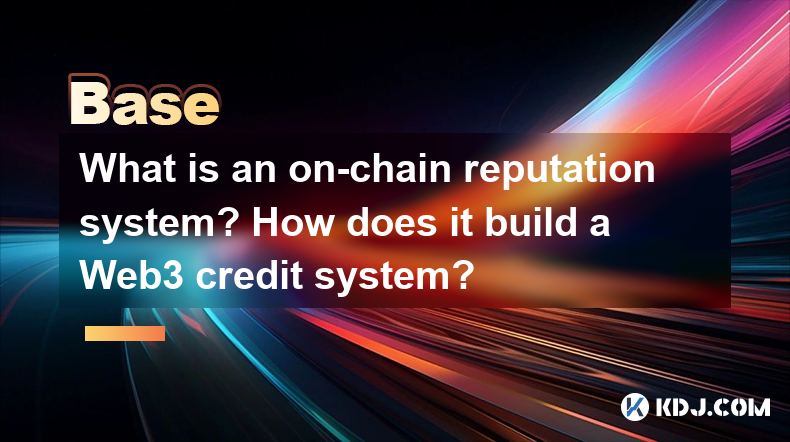
An on-chain reputation system is a mechanism used within blockchain networks to assess and track the behavior and contributions of participants. This system leverages the transparency and immutability of blockchain technology to create a verifiable and tamper-proof record of a user's actions, interactions, and contributions. By doing so, it establishes a digital identity that can be used to build trust and facilitate interactions within decentralized ecosystems.
On-chain reputation systems are crucial in the development of a Web3 credit system, as they provide a foundation for assessing the creditworthiness of participants in a decentralized financial environment. Unlike traditional credit systems that rely on centralized databases and third-party credit bureaus, a Web3 credit system uses blockchain technology to create a decentralized, transparent, and inclusive framework for credit assessment.
How On-Chain Reputation Systems Work
On-chain reputation systems operate by recording and analyzing a user's activities on the blockchain. These activities can include transactions, smart contract interactions, participation in decentralized applications (dApps), and contributions to decentralized autonomous organizations (DAOs). Each action contributes to the user's reputation score, which is stored on the blockchain and can be accessed by other participants.
The reputation score is typically calculated using algorithms that consider various factors such as the frequency of interactions, the value of transactions, the reliability of the user, and the quality of their contributions. These factors are weighted differently depending on the specific use case and the goals of the reputation system. For instance, a DeFi lending platform might prioritize transaction history and collateral management, while a DAO might value active participation and governance contributions.
Building Trust in Decentralized Networks
One of the primary benefits of on-chain reputation systems is their ability to build trust in decentralized networks. In traditional systems, trust is often established through centralized intermediaries such as banks or credit bureaus. However, in a decentralized environment, these intermediaries are replaced by transparent and verifiable data on the blockchain.
By providing a clear and immutable record of a user's actions, on-chain reputation systems enable participants to assess the trustworthiness of others without relying on third parties. This is particularly important in peer-to-peer interactions, where the absence of intermediaries increases the risk of fraud or default. A strong reputation score can serve as a signal of reliability and integrity, encouraging other users to engage in transactions or collaborations.
Integration with Web3 Credit Systems
On-chain reputation systems play a pivotal role in the development of Web3 credit systems by providing the necessary data to assess creditworthiness. In a traditional credit system, factors such as credit history, payment behavior, and debt levels are used to determine a borrower's credit score. In a Web3 credit system, similar factors can be derived from on-chain data.
For example, a user's transaction history on a blockchain can be analyzed to assess their financial responsibility and reliability. Smart contract interactions can provide insights into their ability to manage and fulfill obligations. Participation in decentralized finance (DeFi) protocols can demonstrate their experience and understanding of financial instruments.
To integrate on-chain reputation systems with Web3 credit systems, several steps are required:
- Data Collection: Gather relevant on-chain data, including transaction history, smart contract interactions, and participation in dApps and DAOs.
- Data Analysis: Use algorithms to analyze the collected data and calculate a reputation score that reflects the user's creditworthiness.
- Credit Assessment: Translate the reputation score into a credit score that can be used by lending platforms and other financial services.
- Integration: Incorporate the credit score into existing DeFi protocols and platforms, allowing them to make informed lending decisions based on on-chain data.
Challenges and Considerations
While on-chain reputation systems offer significant advantages, they also face several challenges and considerations. One key challenge is ensuring the privacy and security of user data. Although blockchain technology provides transparency, it also raises concerns about data exposure and potential misuse.
To address these concerns, on-chain reputation systems can implement privacy-preserving technologies such as zero-knowledge proofs, which allow users to prove their reputation without revealing sensitive information. Additionally, encryption and secure data storage can help protect user data from unauthorized access.
Another consideration is the potential for manipulation and gaming of the reputation system. Since reputation scores are used to assess creditworthiness, users may attempt to artificially inflate their scores through fraudulent activities. To mitigate this risk, on-chain reputation systems can implement robust verification mechanisms and use machine learning algorithms to detect and prevent suspicious behavior.
Use Cases and Applications
On-chain reputation systems have a wide range of applications within the Web3 ecosystem. One prominent use case is in decentralized lending platforms, where reputation scores can be used to assess the creditworthiness of borrowers. By analyzing a user's on-chain data, lending platforms can make more informed decisions about loan approvals and interest rates.
Another application is in decentralized marketplaces, where reputation scores can help build trust between buyers and sellers. A high reputation score can signal to potential buyers that a seller is reliable and trustworthy, increasing the likelihood of successful transactions.
In addition to lending and marketplaces, on-chain reputation systems can be used in decentralized governance and decision-making processes. For example, DAOs can use reputation scores to determine the voting power of members, ensuring that those with a proven track record of contributions have a greater say in the organization's decisions.
Frequently Asked Questions
Q: How can users improve their on-chain reputation score?
A: Users can improve their on-chain reputation score by engaging in positive activities on the blockchain, such as making regular transactions, participating in governance, and contributing to decentralized projects. Consistency and reliability are key factors in building a strong reputation.
Q: Are on-chain reputation systems compatible with existing credit systems?
A: While on-chain reputation systems are designed for decentralized environments, they can be integrated with existing credit systems through data sharing and interoperability protocols. This allows traditional credit bureaus to incorporate on-chain data into their assessments, creating a more comprehensive view of a user's creditworthiness.
Q: What are the potential risks of relying on on-chain reputation systems for credit assessment?
A: The main risks include data privacy concerns, potential manipulation of reputation scores, and the need for robust verification mechanisms. Users and platforms must implement strong security measures and continuously monitor for fraudulent activities to mitigate these risks.
Q: Can on-chain reputation systems be used across different blockchain networks?
A: Yes, on-chain reputation systems can be designed to be interoperable across different blockchain networks. This can be achieved through cross-chain protocols and standardized data formats, allowing users to maintain a consistent reputation score across multiple platforms.
Disclaimer:info@kdj.com
The information provided is not trading advice. kdj.com does not assume any responsibility for any investments made based on the information provided in this article. Cryptocurrencies are highly volatile and it is highly recommended that you invest with caution after thorough research!
If you believe that the content used on this website infringes your copyright, please contact us immediately (info@kdj.com) and we will delete it promptly.
- "Cardano (ADA) Price Could Dip Below $0.60, Following Previous Market Cycle"
- 2025-04-09 05:10:12
- BONK, the well-known meme coin, has risen over 35% in the last week, attracting meme coin investors in the market. So, what caused this rally?
- 2025-04-09 05:10:12
- Bitcoin (BTC) Investors May Not Exactly Feel It, but BTC Has Been a Relatively Good Bet
- 2025-04-09 05:05:12
- Donald's Bitcoin (DONBTC) Could Turn Early Investors into Multi-Millionaires, Like Shiba Inu (SHIB) and Dogecoin (DOGE) Did
- 2025-04-09 05:05:12
- 6 Upcoming Kraken Listings That Could Be the Next Big Thing in Crypto
- 2025-04-09 05:00:13
- COTI Unveils New Privacy-Focused Blockchain to Reshape Web3 Transactions
- 2025-04-09 05:00:13
Related knowledge

What is Serenity?
Apr 08,2025 at 02:00pm
Serenity, also known as Ethereum 2.0, represents a major upgrade to the Ethereum blockchain. This ambitious project aims to address the scalability, security, and sustainability issues faced by the current Ethereum network. Serenity is not a single update but a series of upgrades that will transform Ethereum into a more efficient and robust platform. Th...
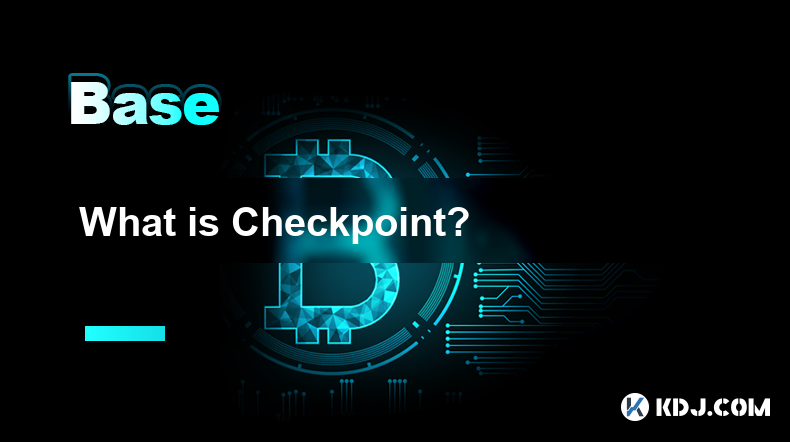
What is Checkpoint?
Apr 08,2025 at 05:08pm
A checkpoint in the context of blockchain and cryptocurrencies is a mechanism used to enhance the security and efficiency of a blockchain network. It serves as a snapshot of the blockchain at a specific point in time, which can be used to validate the integrity of the chain and prevent certain types of attacks. Checkpoints are particularly important in ...

What is Finality Gadget?
Apr 08,2025 at 04:14am
The Finality Gadget is a crucial component in the architecture of certain blockchain networks, particularly those that utilize a hybrid consensus mechanism. It plays a pivotal role in ensuring the finality of transactions, which means that once a transaction is confirmed, it cannot be altered or reversed. This article delves into the intricacies of the ...
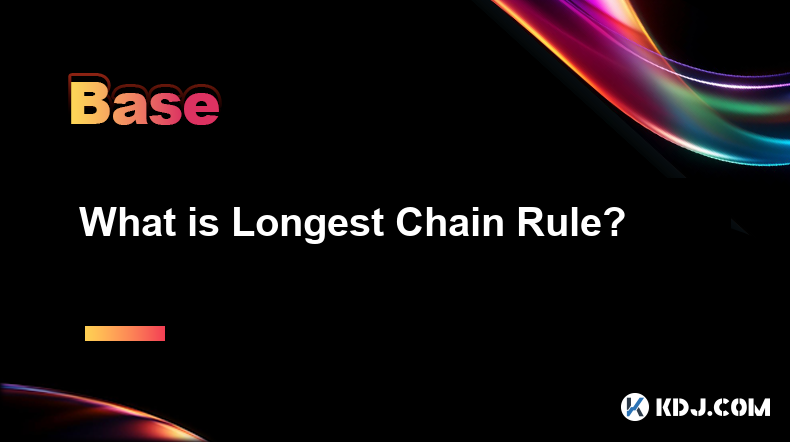
What is Longest Chain Rule?
Apr 08,2025 at 07:50am
The Longest Chain Rule is a fundamental concept in blockchain technology, particularly in the context of cryptocurrencies like Bitcoin. This rule is crucial for maintaining the integrity and security of the blockchain network. In essence, the Longest Chain Rule dictates that the valid blockchain is the one with the most cumulative proof-of-work, which i...
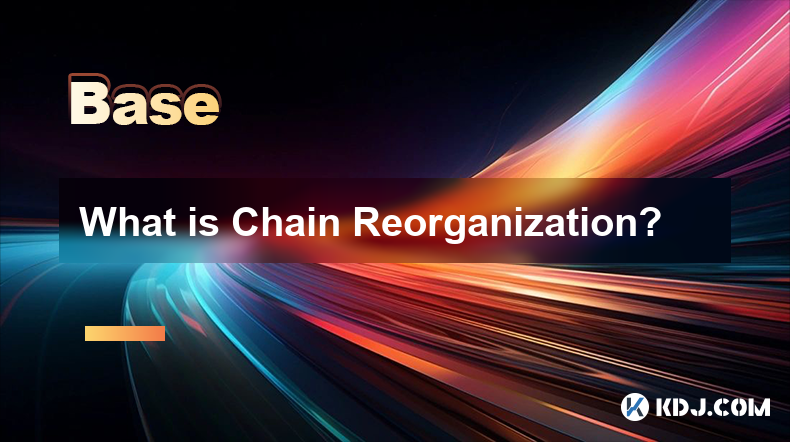
What is Chain Reorganization?
Apr 08,2025 at 03:08pm
What is Chain Reorganization? Chain reorganization, often referred to as a 'reorg,' is a fundamental concept in blockchain technology that can significantly impact the integrity and operation of a blockchain network. Chain reorganization occurs when a blockchain network replaces a previously accepted block or series of blocks with a new set of blocks, l...
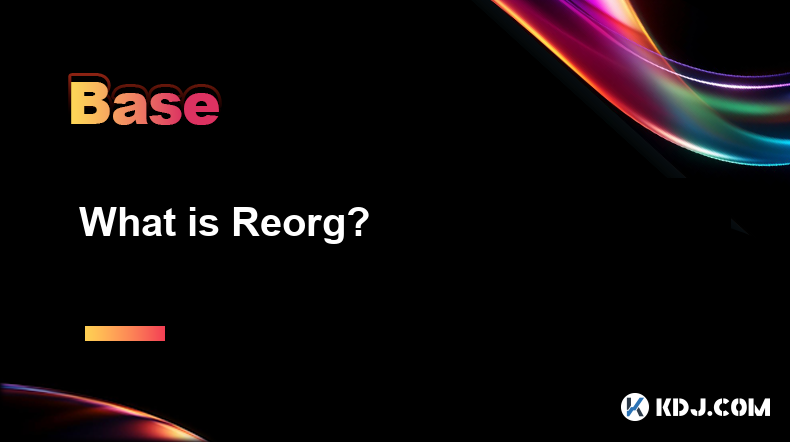
What is Reorg?
Apr 08,2025 at 11:08pm
What is Reorg?In the world of cryptocurrencies, particularly those that operate on blockchain technology, the term Reorg or Blockchain Reorganization is a critical concept that users and developers need to understand. A reorg refers to a situation where the blockchain undergoes a reorganization of its blocks, which can lead to changes in the accepted ve...

What is Serenity?
Apr 08,2025 at 02:00pm
Serenity, also known as Ethereum 2.0, represents a major upgrade to the Ethereum blockchain. This ambitious project aims to address the scalability, security, and sustainability issues faced by the current Ethereum network. Serenity is not a single update but a series of upgrades that will transform Ethereum into a more efficient and robust platform. Th...

What is Checkpoint?
Apr 08,2025 at 05:08pm
A checkpoint in the context of blockchain and cryptocurrencies is a mechanism used to enhance the security and efficiency of a blockchain network. It serves as a snapshot of the blockchain at a specific point in time, which can be used to validate the integrity of the chain and prevent certain types of attacks. Checkpoints are particularly important in ...

What is Finality Gadget?
Apr 08,2025 at 04:14am
The Finality Gadget is a crucial component in the architecture of certain blockchain networks, particularly those that utilize a hybrid consensus mechanism. It plays a pivotal role in ensuring the finality of transactions, which means that once a transaction is confirmed, it cannot be altered or reversed. This article delves into the intricacies of the ...

What is Longest Chain Rule?
Apr 08,2025 at 07:50am
The Longest Chain Rule is a fundamental concept in blockchain technology, particularly in the context of cryptocurrencies like Bitcoin. This rule is crucial for maintaining the integrity and security of the blockchain network. In essence, the Longest Chain Rule dictates that the valid blockchain is the one with the most cumulative proof-of-work, which i...

What is Chain Reorganization?
Apr 08,2025 at 03:08pm
What is Chain Reorganization? Chain reorganization, often referred to as a 'reorg,' is a fundamental concept in blockchain technology that can significantly impact the integrity and operation of a blockchain network. Chain reorganization occurs when a blockchain network replaces a previously accepted block or series of blocks with a new set of blocks, l...

What is Reorg?
Apr 08,2025 at 11:08pm
What is Reorg?In the world of cryptocurrencies, particularly those that operate on blockchain technology, the term Reorg or Blockchain Reorganization is a critical concept that users and developers need to understand. A reorg refers to a situation where the blockchain undergoes a reorganization of its blocks, which can lead to changes in the accepted ve...
See all articles






















































































